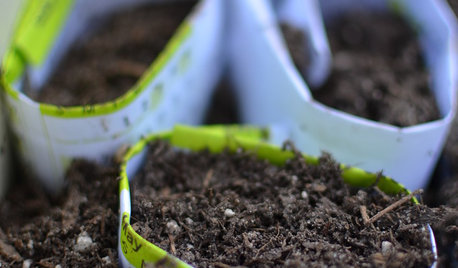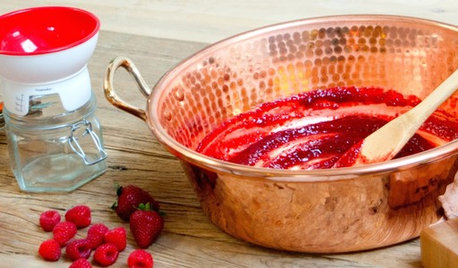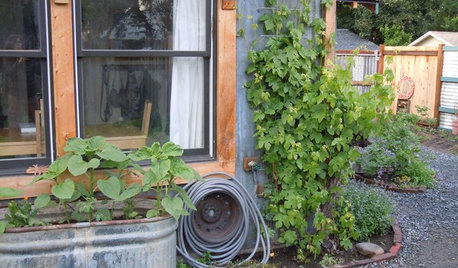Drip irrigation for tomatoes
Lynn Dollar
10 years ago
Related Stories

GARDENING GUIDESHow to Install a Drip Irrigation System
Save time and water with a drip watering system in your vegetable garden — a little patience now will pay off later
Full Story
EDIBLE GARDENSSummer Crops: How to Grow Tomatoes
Plant tomato seedlings in spring for one of the best tastes of summer, fresh from your backyard
Full Story
SAVING WATER6 Reasons Why You Should Save Your Rainwater Now
Collect and store during the rainy season so you’ll have water ready for irrigation when you need it
Full Story
GREEN BUILDINGHow to Harvest Rainwater for Your Garden
Conserve a vital resource and save money by collecting stormwater for irrigation in a barrel or tank
Full Story
SOUTHWEST GARDENINGTexas and Desert Southwest Gardener's January Checklist
Since snow doesn't swirl in these parts, it's time to get fruit trees in the ground, check irrigation and color the garden with annuals
Full Story
EARTH DAYGrow a Beautiful Garden With Ecofriendly Greywater
Reducing home water waste means lower bills and a healthier planet. Here's how to set up a greywater home irrigation system that can help
Full Story
FARM YOUR YARDHouzz Call: Home Farmers, Show Us Your Edible Gardens
We want to see where your tomatoes, summer squashes and beautiful berries are growing this summer
Full Story
GARDENING GUIDESCalifornia Gardener's June Checklist
Update your hydrangeas, catch up on tomatoes and more ways to enjoy your California garden in June
Full Story
SHOP HOUZZHouzz Products: Save a Taste of Summer
Can't bear to part with the flavors of summer peaches, berries and tomatoes? Then jam on it!
Full Story
GARDENING GUIDESEdible Gardening Essentials: Tips for Traditional Hand Watering
Save the expense and hassle of a complicated garden system with a simple watering can or inexpensive hose add-ons
Full StorySponsored
Columbus Area's Luxury Design Build Firm | 17x Best of Houzz Winner!
More Discussions







slowpoke_gardener
nated
Related Professionals
Allentown Landscape Architects & Landscape Designers · Kenmore Landscape Architects & Landscape Designers · Lakewood Landscape Architects & Landscape Designers · Oconomowoc Landscape Architects & Landscape Designers · Washington Landscape Architects & Landscape Designers · Tempe Landscape Contractors · Allentown Landscape Contractors · Berwyn Landscape Contractors · South Lake Tahoe Landscape Contractors · West Palm Beach Landscape Contractors · Framingham Decks, Patios & Outdoor Enclosures · Fullerton Decks, Patios & Outdoor Enclosures · Marlboro Decks, Patios & Outdoor Enclosures · Salisbury Decks, Patios & Outdoor Enclosures · Scotts Valley Decks, Patios & Outdoor EnclosuresOkiedawn OK Zone 7
Lynn DollarOriginal Author
nated
Okiedawn OK Zone 7
ponderpaul
soonermook